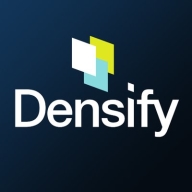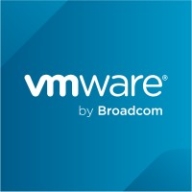

Densify and VMware Tanzu Platform compete in the cloud management and optimization space. Densify has an advantage in pricing and customer service, focusing on optimization and cost efficiency, whereas VMware Tanzu Platform excels in extensive features, appealing to users requiring advanced capabilities.
Features: Densify specializes in cloud cost optimization, resource utilization, and automated recommendations. VMware Tanzu Platform includes app modernization, multi-cloud support, and Kubernetes management.
Room for Improvement: Densify could enhance its features for broader platform integration and app modernization. VMware Tanzu Platform might focus on simplifying deployment and improving cost efficiency to attract budget-conscious clients. Both could benefit from streamlined processes for faster implementation.
Ease of Deployment and Customer Service: Densify offers quick deployment and responsive customer support, facilitating rapid integration. VMware Tanzu Platform, with its complex capabilities, can pose deployment challenges but provides extensive configurations for depth.
Pricing and ROI: Densify is competitively priced, offering a favorable ROI through cloud cost savings and resource efficiency. VMware Tanzu Platform has higher setup costs but promises substantial ROI via its comprehensive features that enhance cloud-native operations.
| Product | Market Share (%) |
|---|---|
| VMware Tanzu Platform | 1.1% |
| Densify | 0.9% |
| Other | 98.0% |


| Company Size | Count |
|---|---|
| Small Business | 1 |
| Midsize Enterprise | 1 |
| Large Enterprise | 9 |
| Company Size | Count |
|---|---|
| Small Business | 10 |
| Midsize Enterprise | 3 |
| Large Enterprise | 10 |
Densify is a hybrid cloud and container resource management platform that makes workloads self-aware of their precise resource requirements and automates the resource management and selection process. This solution helps you control your cloud spend and also helps your apps perform and scale better. Densify enables you to match your cloud requirements with the optimal cloud supply. Additionally, Densify is the only technology that leverages patented, predictive machine learning-powered analytics to perform advanced modeling of workload patterns, and provide precise optimization directives. It is ideal for cloud engineers, container platform owners, and IT finance.
Densify works by:
Densify Features
Densify has many valuable key features. Some of the most useful ones include:
Densify Benefits
There are many benefits to implementing Densify. Some of the biggest advantages the solution offers include:
VMware Tanzu Platform is designed for cloud-native development and management of Kubernetes, CI/CD processes, microservices, and containerized workloads. It supports deployments both on cloud and on-premises, providing centralized management via Mission Control.
VMware Tanzu Platform offers seamless integration with vSphere, ESX, and vSAN, supporting centralized cluster management and lifecycle management. The platform provides a GUI for monitoring CI/CD pipelines and network policies, enhancing multi-tenancy and Day 2 operations. Users can easily manage Kubernetes clusters, monitor applications, and integrate with tools such as GitHub, GitLab, Cloud Foundry, and Azure. It ensures compliance and security for service providers, financial institutions, and businesses.
What are the key features of VMware Tanzu Platform?
What benefits and ROI should users look for in VMware Tanzu Platform reviews?
Industries such as financial institutions, service providers, and businesses requiring rigorous compliance and security deploy VMware Tanzu Platform. These entities benefit from centralized management, streamlined DevOps processes, and integrated tools, enhancing their capabilities in cloud-native developments and containerized workloads.
We monitor all Cloud Management reviews to prevent fraudulent reviews and keep review quality high. We do not post reviews by company employees or direct competitors. We validate each review for authenticity via cross-reference with LinkedIn, and personal follow-up with the reviewer when necessary.